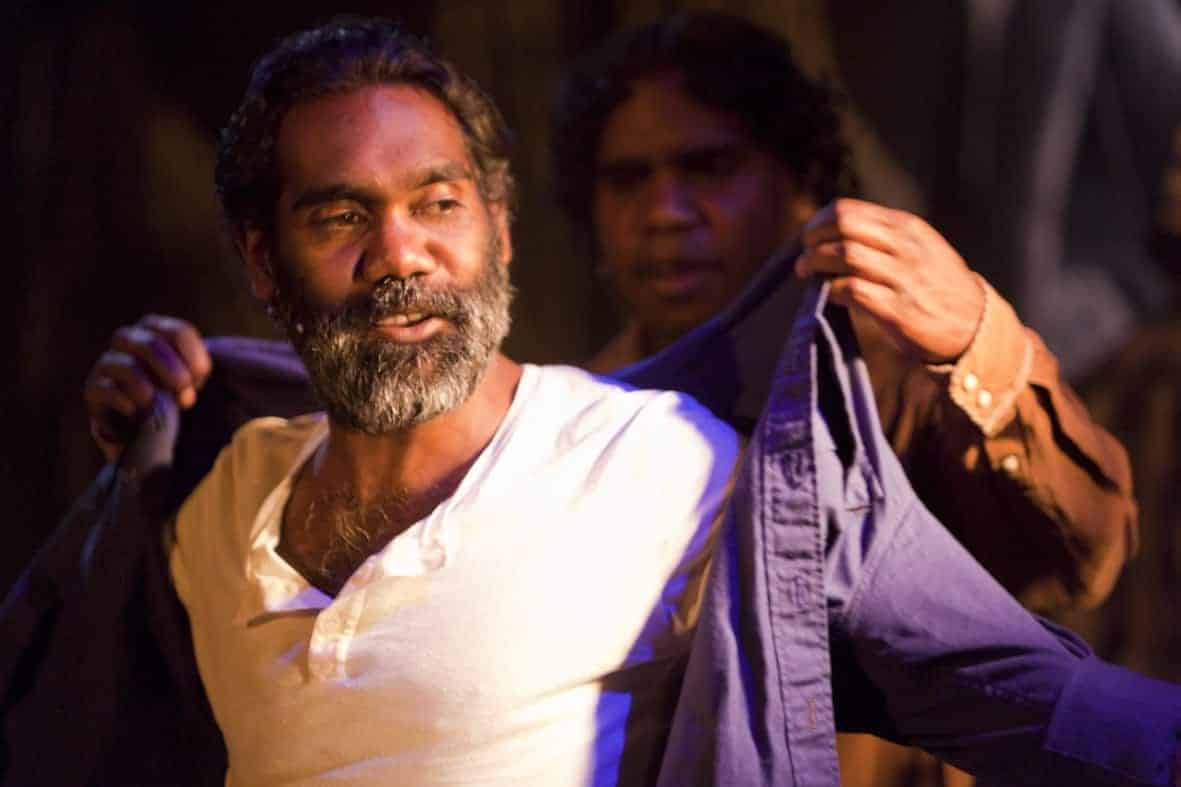IN 1954, during the coronation tour of Australia, Queen Elizabeth II met Aboriginal artist Albert Namatjira. He presented Her Majesty with his painting of Heavitree Gap in Alice Springs.
60 years later, Namatjira’s descendants, along with Australian actors Trevor Jamieson and Derik Lynch, are in London to present the life of this iconic indigenous artist on stage in Namatjira.
“I am hoping the Royals could come meet them, the way they met their grandfather,” says Jamieson, who performs in the title role.
“Perhaps she’ll (Queen Elizabeth II) pull out one his originals, and say this was done by your grandfather. Imagine that.”
Namatjira was one of the first indigenous artists to paint and exhibit professionally in the watercolour style. Jamieson describes him as an “entrepreneur”, the way he painted the picture no one had ever seen.
“All these people from coastal cities had never seen the land depicted in that way. So Albert was the first… and he became quite famous,” Jamieson tells Australian Times.
At the height of Namatjira’s career, his exhibitions sold out within minutes. He was making more money than neighbouring pastoralists, and was becoming a household name. When it was broadcast the Queen loved her Namatjira painting, the demand and value of his art increased rapidly.
The play incorporates Namatjira’s connections to the Queen and the painting he presented to her. However, as writer and director Scott Rankin explains, the play is more about the friendship between Namatjira and Rex Battarbee, the man who taught him to paint.
“It’s a dual story of the Battarbee family…and the Namatjira family, and how those two men came together, and then how their life and friendship developed,” says Rankin.
Rankin uses this central relationship as a prism, which audiences can use to look at Australia today, and explore the ways cultures could belong together, and what’s in common rather than what is different.
“At this point in history the relationship between Rex and Albert is very significant, and allows us to look at ourselves. It’s allowed me to look at my friendship with Trevor for instance. There are similarities between the cultural struggles of Rex and Albert, and the cultural struggles between Trevor and Scott.”
Jamieson agrees. “In a way it sort of reflects me and Scott. He’s been there to support my family, and help me in my career. And I’ve helped him understand certain issues we face as Aboriginal people and artists in Australia.”
Namatjira’s style of painting has been passed down through generations, and his descendants continue to keep his legacy alive. As part of this performance, members of the Namatjira family will be on stage painting in their grandfather’s style.
“When people come and see the show, they get that feeling of walking into a studio because we have the Namatjiras on stage painting landscapes, with chalk on a big black board,” describes Jamieson.
The doors of the Purcell Room at the Southbank Centre will open 30 minutes before the performance begins, inviting members of the audience to watch the artists as they work.
“There’s also another artist, Robert Hannaford who’s one of Australia’s best know portrait painters. He’s painting the portrait of Trevor, who gives a performed portrait of Albert, while the family is painting. So there are these layers of interpretation,” explains Rankin.
Created by Big hART Inc., an arts and social change organisation, this theatrical performance is part of a wider development program known as The Namatjira project.
In celebrating the life and legacy of Namatjira, this project, which has toured Australia, includes a contemporary watercolour exhibition, and watercolour painting workshops as accompaniments to the stage show.
The Namatjira project also aims to promote underfunded arts centers within Indigenous communities, and support the campaign to give the copyright of Namatjira’s art works, back to his family.
“For the Namatjira family they don’t own the copyright in their grandfather’s work, and they want to get it back. They have trouble promoting their art, and the arts center are finding it hard to keep going,” explains Rankin.
“If the project was super successful, we’d have a beautiful piece of art, we’d have the copyright back in the hands of the family and a trust. And lastly there would be a shift in the policy around supporting the arts centers.”
And if they’re lucky, perhaps a visit from the Queen.
Namatjira, created by Big hArt Inc. with the Namatjira family is on at the Purcell Room at the Southbank Centre from Wednesday 27 November to Friday 29 November. Click here for more information and to buy tickets.










 Explore top-rated compensation lawyers in Brisbane! Offering expert legal help for your claim. Your victory is our priority!
Explore top-rated compensation lawyers in Brisbane! Offering expert legal help for your claim. Your victory is our priority! 

 "
"


